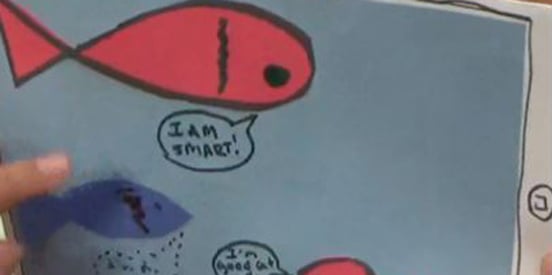Share Content
Article Link Copied
Reaching for Happiness: What Would Kids Invent?

The importance of social and emotional education has gained recognition over the past few years and is now commonly included in the curriculum. Technology can play a major role in supporting this kind of education to promote social and emotional health. We worked with kids to see what kinds of technologies they would want.
Text: Stephen Schueller and Svetlana Yarosh
Developing good social and emotional skills in childhood is important and a critical piece of academic, occupational, and life success. However, too many kids are not taught to develop these skills in the early years. To this regard, schools have started to bring social and emotional education to the classroom. However, to truly impact kids’ lives, these skills also need to be taught outside of the classroom, allowing kids to practice, master, and apply these skills. Technology may have an important part to play in this transition from in-class learning to real-world application, but this requires understanding what kids need and want from these technologies.
Happiness Inventors
In collaboration with Youth & Opportunity United (Y.O.U.), a youth development agency that provides services and leadership to meet the emerging needs of young people and their families, we led an 8-week workshop called “Happiness Inventors.” We trained twelve kids to become “Happiness Inventors.” The kids learned what it means to be an inventor, and how ideas could be turned into technologies like mobile apps and other devices. We also taught them skills based on positive psychology – expressing and experiencing gratitude, mindfulness, and problem-solving – while learning from their definitions of these concepts and the concept of happiness. They came up with over 400 ideas about how technologies could support their happiness and reinforce these skills. They presented their ideas as sketches, prototypes, and videos and settled on 8 final ideas ranging from watches to robots, backpacks to video conferencing.
Implications for Happiness Technologies
Although we didn’t turn any of these ideas into technologies, we learned what kids thought about happiness, gratitude, mindfulness, and problem-solving, and the types of technologies they would want to support acquisition of these skills. The kids offered to make these abstract concepts more concrete by capturing their thoughts or emotions in drawings, texts, or other forms that they could interact with or offering practical support. Rather than focusing on their internal world (of thoughts and emotions) kids also focused on aspects of the environment.
What kids really want
The types of technologies that kids wanted were rarely desktops or laptops but instead were interactive or embodied technologies such as wearables, portable screens, robots. This stands in stark contrast to the various computer and app-based software programs that have typically been developed to promote kids’ social and emotional health. It might beneficial for designers, educators, and researchers to consider intervention technologies not as “sites” that children “visit,” but rather as tools that live alongside them in the real physical world.
Peer exchange
Lastly, kids came up with strategies to engage their peers and motivate them to use such technologies. We had our share of traditional ideas like rewards and punishments, games and gamification, and humor, but they also came up with a lot of novel and creative suggestions. The kids suggested technologies that stimulated all of the senses including touch, sound, and smells. Furthermore, they emphasized technologies that could detect one’s thoughts and emotions directly which is becoming more feasible through various sensors and wearable devices.
If you’re interested in learning more about “Happiness Inventors” we made a video and wrote a paper. We found that kids were really interested in sharing their thoughts with us about happiness, how to achieve it, and the technologies that could help them.
